Montessori In The House Of Flowers
How did Montessori work in the House of Flowers?
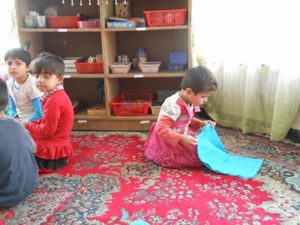
We have drawn upon a set of essential Montessori principles to structure the House of Flowers. These are based on Maria Montessori’s developmental model and the corresponding characteristics of a Montessori classroom. Simple, natural and powerful, implementing these principles (also described below) has wrought profound changes upon the children as well as on the staff. The result is a joyful home.
The Montessori Principles Underlying the House of Flowers
Freedom – By offering children supervised freedom (not unlimited freedom), they begin to resume their normal path of development that may have been diverted by trauma or upheaval. They regain a sense of control, while the limits give them a sense of safety. The children are free to move throughout the House, to choose their work in the classroom, to draw or play or do any manner of expressive arts. They have a great deal of unscheduled time (unlike other orphanages) in which to play, to sit and read, to think or to chat. Children are free to make mistakes, to work without interruption, and to ask questions. This freedom brings them a sense of joy and peace that is palpable.
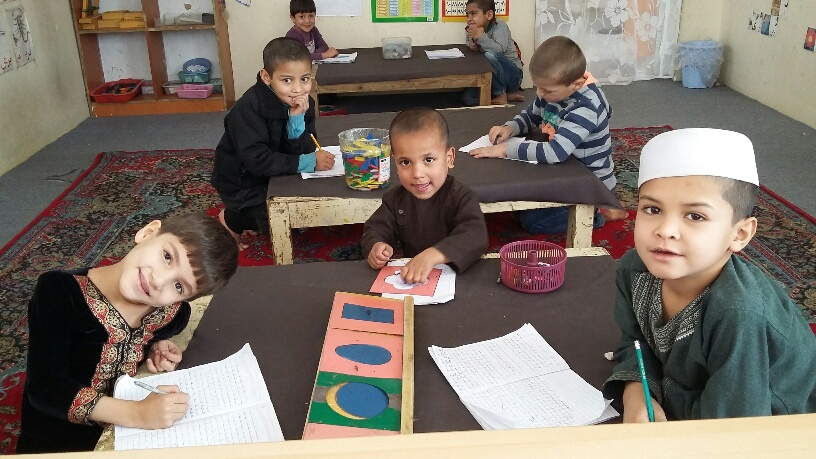

Multi-age Groupings – This one has been easy, since the House has always been full of a wide range of ages. It has resulted in an environment that feels like a very large family. For the classrooms, children are divided according to their developmental plane as much as possible. One classroom contains children from age 6-12 (with a few younger ones as well) and the other classroom is for older children age 12-18.
Respect – The House is a house of respect for everyone. Even the smallest child is treated with respect. Adults and children in the House listen to each other. Discipline issues, when they arise, are treated calmly and with dignity and clear communication.
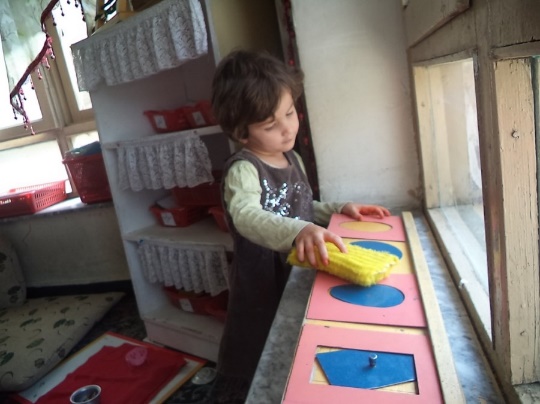
Dusting the metal insets
Responsibility and Work – Every child in the House is a vital member of the community. Everyone assists with chores, with meal prep and clean-up. Certain jobs are particularly good for the youngest ones, such as using a sponge to wipe clean the long tablecloth.
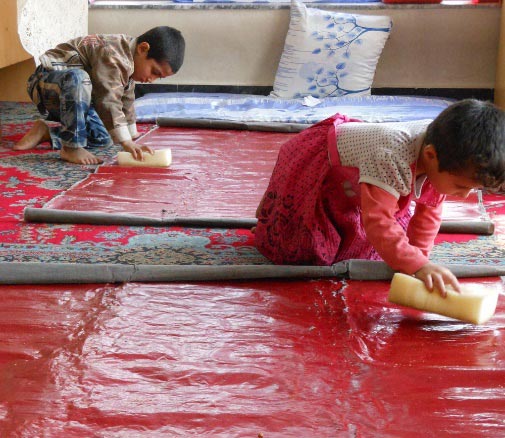
The rhythmic arm motion seems to soothe and calm the children, and the end result is very satisfying for them. Older children are expected to be a constant and caring support for the younger ones. They are also often sent to do small shopping nearby such as to buy bread for dinner, or packets of soap for the House, to give them experience with handling money.
Children are given allowances and also gain skills of financial responsibility and saving money through their personal ‘bank accounts’ in the House of Flowers bank. This bank is managed entirely by the children.
Grace and Courtesy – Afghan hospitality is legendary. The importance of proper greetings here cannot be understated. In the House of Flowers, everyone greets each other fully and properly when coming and going. Guests are treated to the best seat and softest pillow in the room, and the children are adept at serving tea and taking excellent care of visitors.
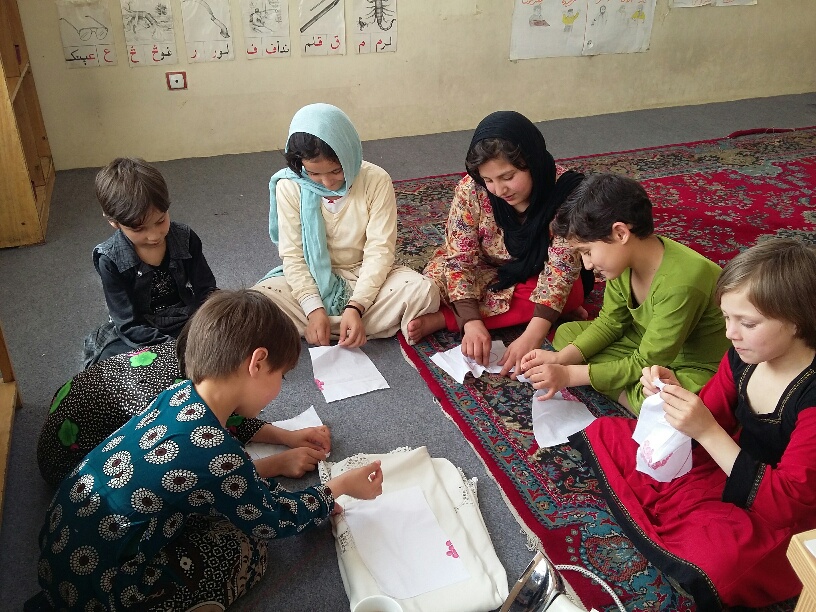
Work with the hands – The House of Flowers environment is full of activities for the children to do both during their lessons as well as in the evenings and on days off. They do handicrafts; they play with toys; they paint and draw and build. Shahin Shah has taught himself how to make circuits; Abdul Rahman builds small cities with blocks. Shekib sorts beans; Sahar makes giant floor puzzles. Nadia makes a model of the Eiffel Tower out of cardboard while the older girls trace an outline of Ramin’s body on a large piece of paper. Shabana uses metal insets to create beautiful geometrical patterns. Wahida does addition on the bead frame. Mujib uses the stamp game to learn long division.
Through this work with the hands, children’s brains develop in a more integrated way. There is evidence of the success of this approach: out of 20 of our children who currently go to the neighborhood school, 12 of them have tested out of one or two grades.
Connection with the Community

It is no easy task to take 30 children on a field trip, but whenever possible, the House of Flowers staff takes the children to explore different parts of Kabul. In Montessori terms, for the older children these are ‘going outs’. They have visited the airport, a bank, a bakery, the national museum, UN offices, parks, the zoo, and a lake in the countryside. The goal of these trips is to connect the children with their environment and community, and help them become aware of their role in the society.

